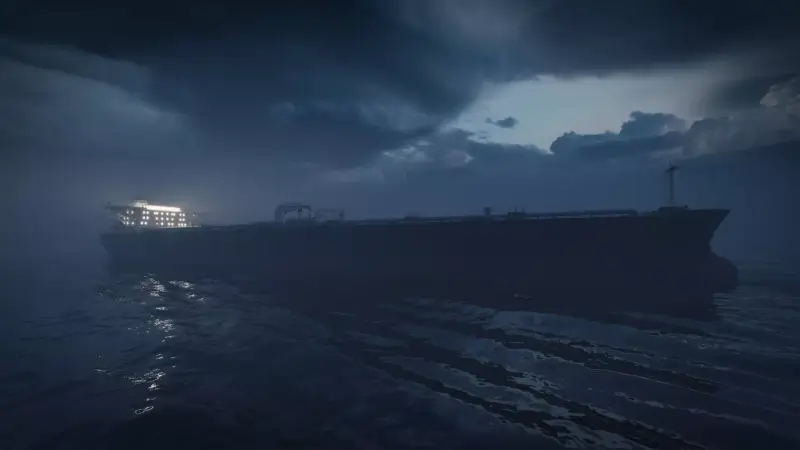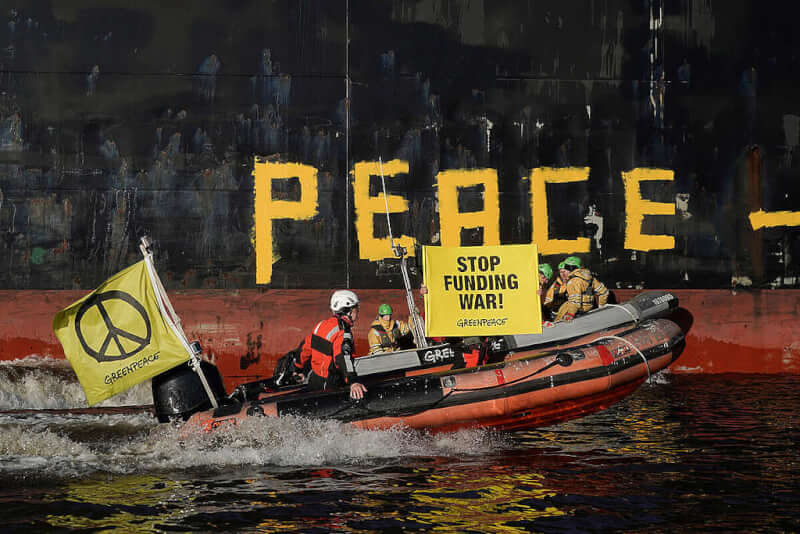
Britain and Finland are discussing ways to foil a shadow fleet of tankers that has been skirting Western sanctions and smuggling Russian crude oil and diesel fuel out of the Baltic Sea to international markets.
Estimates of the number of tankers running illicit Russian oil vary wildly between 100 and 1,400. Uninsured and masked behind opaque ownership structures, they are believed to be transporting 90 million tonnes of oil through the Danish straits into the North Sea each month—and spying in the process.
The European Union slapped a US$60-a-barrel price cap on Russian oil in December 2022 to curtail Moscow’s ability to finance its war in Ukraine and avert a surge in global oil prices after embargoes on Russian crude.
Crude is currently going for around US$80 a barrel on the open market. Russia is selling it to a handful of countries for more than the $60 cap, but marginally less than market price. It is the third-largest producer of oil worldwide, accounting for more than 12 per cent of global crude oil production.
The Finnish foreign minister, Elina Valtonen, said this week that G7 participation in foiling the scheme is important “because obviously what the shadow fleet is doing is circumventing the oil price cap.”
“We are looking at several ways of making life harder for their ships, but also for those countries under whose flags they are operating,” said Valtonen.
The top five flags of dark fleet vessels are Panama, Liberia, Marshall Islands, Russia and Malta, according to the Windward maritime consultancy. Gabon and landlocked Eswatini have also been cited as favoured flags.
Ship operators of all stripes routinely resort to the so-called flags of convenience to circumvent stricter—and more costly—regulations imposed by the countries from which they actually operate. For states such as Liberia and Panama, the practice of issuing such licences represents a significant revenue source.
“We need to find solutions,” said Valtonen, “not just as the EU, but collectively with our partners and allies around the world to find ways effectively to put an end to this because it’s obviously not just an environmental risk, but also it’s a way for Russia to keep on exporting its oil and getting hard currency for its economy.”
Estimates of the number of tankers running illicit Russian oil vary wildly between 100 and 1,400.
Some 33 million barrels of oil are believed to have passed in uninsured ships through the Viro Strait between Estonia and Finland alone in the first quarter of 2024.
Windward identifies India and China as the top buyers of illicit Russian crude.
Outright bans on Russian oil imports by Canada, the U.S., the U.K., the EU, Australia, Japan and others, and the resulting decline of Russian oil prices, have opened the market to other buyers. Countries such as China, India and Turkey have significantly increased trade with Russia, leading not just to an expanding shadow, or dark, fleet, but also a rise in the quasi-legal gray fleet working parallel to the legitimate, so-called cleared, fleet.
“On the clean petroleum products side, the interdependence of Russia and Europe remained strong even after the conflict, especially when it comes to diesel,” said a Windward analysis. “As a result, Belgium and Netherlands continued to be the favorite destination throughout the end of 2022.
“Since then, the EU started to unwind its exposure on Russian products, which culminated in the February 5 ban, with Turkey emerging as the predominant buyer. Unlike the crude trade, a higher number of buyers has appeared for Russian diesel, in regions such as North and West Africa, the Middle East, and especially Brazil.”
Shadow fleets pre-existed the Ukraine war and subsequent sanctions.
Windward says the gray fleet carried around 2.6 million barrels of Russian oil per day post-invasion, a 68 per cent increase over pre-invasion levels. The dark fleet increased its cargoes by 21 per cent.
Windward says that, besides murky ownership structures, the dark fleet resorts to a variety of methods to hide its activities, including using multiple flags of convenience (known as “flag hopping”) and manipulating the Global Navigation Satellite System.
“The size of this fleet has fluctuated substantially with each new regulation published and even more so following the Russian oil ban and price caps,” it said, estimating a quarter of the world’s wet cargo fleet comprises either gray or dark vessels, most of them dark.
A substantial number, it adds, are older, repurposed tankers long past their best-before dates, which pose an environmental risk—heightened further by a lack of insurance.

The tankers have been conducting dangerous ship-to-ship transfers of oil off the coast of Gotland, where the Swedish navy reports they’re also equipped with communications gear that’s in no way needed by standard merchant vessels.
“The Russian shadow fleet appears to simultaneously be a spy fleet,” Elisabeth Braw, a senior fellow at the Atlantic Council, reported for the Center for European Policy Analysis on April 26, 2024.
“In recent weeks, shadow vessels have…taken to loitering in Sweden’s exclusive economic zone to the east of Gotland…. Their presence is certainly provocative.”
The ship-to-ship oil transfers got the attention of the environmental organization Greenpeace, whose activists recently painted “Oil fuels war. People want peace” on the side of the fleet’s primary support ship.
Rear Admiral Ewa Skoog Haslum, chief of the Swedish navy, has said her sailors have found suspicious antennae and masts protruding from the dark ships’ superstructures around Gotland, a strategic island in the middle of the Baltic.
“We sense that in what’s moving around at sea, that they sometimes have additional objectives in their activities,” said Skoog Haslum, possibly part of what was described as “hybrid activities” in the Baltic, an inland sea from which Russia exports most of its fossil fuel.
Shadow fleets pre-existed the Ukraine war and subsequent sanctions.
Braw writes that it’s particularly troubling that these supposedly civilian vessels are clearly keen to scope out Gotland since Swedish military have recently re-established a permanent presence there in response to the Russian threat and in which NATO is interested stepping up its activities.
The practice by civilian vessels of spying on maritime nations is not new. During the Cold War, the distant-water fishing fleets of the Soviet bloc working for months on end off Canada’s coast were routinely equipped with elaborate communications and listening gear that was likely intended for more than routine reporting.
Earlier this year, the Washington, D.C.-based Center for Strategic and International Studies reported that 80 per cent of China’s research vessels engage in “suspect behavior or possess organizational links suggesting their involvement in advancing Beijing’s geopolitical agenda.”
Late in 2023, the research vessel Zhu Hai Yun circumnavigated Taiwan for no reason that could be explained by scientific research.
“In recent weeks, shadow vessels have…taken to loitering in Sweden’s exclusive economic zone to the east of Gotland…. Their presence is certainly provocative.”
Meanwhile, efforts to curb the shadow fleet’s activities are progressing, though many Baltic and Nordic countries balk at apprehending ships suspected of being unseaworthy, fearing it would lead to a naval confrontation with Russia.
Swedish Foreign Minister Tobias Billström has been pushing the European Commission to include measures against the vessels in its next round of sanctions. And Finland, which has a long and tension-filled history with Russia and the Soviet Union, is preparing to turn up the heat, to the extent international law allows.
“We will make use of international organizations and also see to which extent the international maritime law allows us to effectively prohibit such traffic,” Valtonen told The Guardian newspaper. “It’s just not very easy because international maritime law is basically geared towards opening navigation and making it very difficult for any country to intervene with free traffic.
“The law was built for a completely different world than what we are now looking at.”
Advertisement










